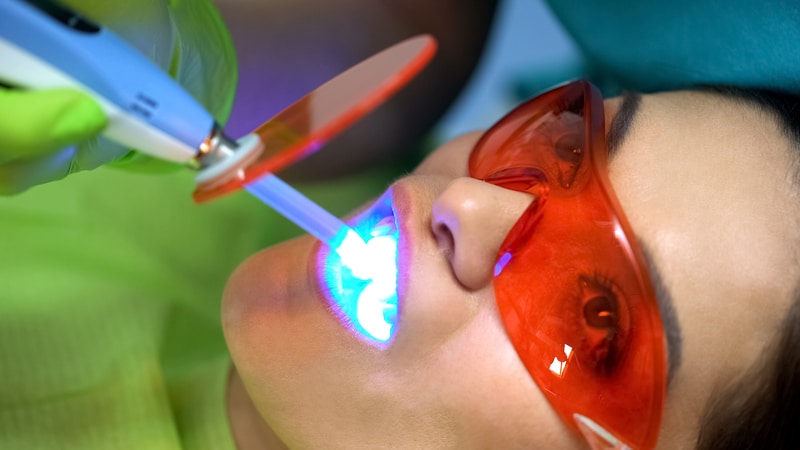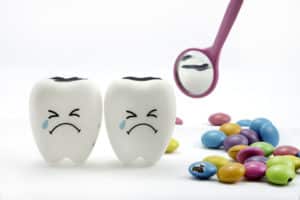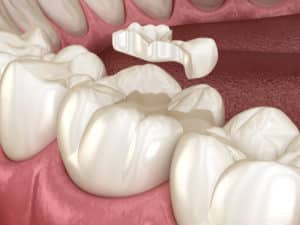Protect Your Teeth with Dental Sealants


The month of April is both Sports Safety Month and National Facial Protection Month. Protecting the teeth is top priority when it comes to sports, exercise and other activities. However, your teeth are exposed to the most damage from the things you eat each day. Sugars, acids and other materials constantly erode, thin or decay the teeth without protection. You can get that protection through dental sealants. Find out what dental sealants are and how they can help protect your teeth!
How Your Teeth Decay
When you think of chronic diseases, you may not think of tooth decay—or “cavities”—as one. However, the National Institutes of Health has found that tooth decay is the #1 most “prevalent chronic disease” Americans face. Gum disease is a close second even though this disease affects 64.7 million American adults. Both of these conditions affect the hard (teeth) and soft (gums) tissues of the mouth and they all lead back to sugar and mouth bacteria.
When you eat, sugars in your foods (and even drinks) will mix with your mouth bacteria to create an acidic substance called plaque. You may even have some of that plaque on your teeth right now if you look in the mirror. Plaque is a sticky and transparent film that likes to stick to your tooth enamel. It collects along your gum line and will build up the longer you go without brushing and flossing. These are the best two habits to have if you want to avoid cavities. The recommendation is to brush your teeth at least twice a day for two minutes at a time. Floss 1-2 times a day, making sure to get up into your gum line to remove plaque and food particles.
When plaque stays on the teeth, the acidic content in it will break up the hard-packed minerals in your teeth. That break up is the decay of your teeth, and it will start to spread to the inside of the tooth over time. Think of it as a black ink stain spreading out on a solid surface. That is what tooth decay is doing to your tooth, only it’s killing the tooth as it spreads. You know tooth decay by the term “cavities”. That’s because it creates cavities of space in your teeth where healthy minerals used to be. Once a tooth area decays, you can’t get it back. It must be removed and filled once more by a dentist. Prevention is always the best option, and you can help prevent cavities with good oral health habits and dental sealants.

Preventing Tooth Decay with Dental Sealants
Investing in dental sealants is an excellent way to avoid dental decay. Dental sealants are thin plastic coatings that Dr. Ania puts all over your teeth. The molars and premolars are the teeth that most need a dental sealant, as these are the ones that do most of the chewing and are most prone to decay. Your front teeth are more for biting and ripping food, while the back teeth are used to chew. Because of deeper grooves and the position in the mouth, your molars get cavities easier than the front teeth. According to the American Dental Association, a dental sealant can reduce your risk for cavities by up to 80%.
When you receive dental sealants, they will bond to your teeth and seal away all the grooves and cracks on the surface. This will prevent plaque and other acidic substances from eroding away your tooth enamel. These are areas where food can more easily become trapped, and where a toothbrush may have a harder time cleaning. Dental sealants will also help prevent tooth decay from happening inside the tooth that commonly leads to root canals and more extensive procedures. Your dental sealant can last you up to 10 years if you take care of your teeth properly.

What Else Can You Do?
You can brush and floss your teeth and still get cavities. When this is happening, you want to ask your dentist about dental sealants and other oral health steps you can take to prevent dental decay. This is important because once a part of your tooth has died, that part is always gone, even if it is replaced by dental material.
Here are a few suggestions to reduce your risk for cavities even more:
- Limit your sugar intake! If you’re not eating tons of sugar, then mouth bacteria doesn’t have the food it needs to make the plaque that decays your teeth. The more sugar you eat, the more cavities you can get and vice versa.
- Add mouthwash to your routine. Mouthwash is a mouth rinse that has antiseptic and cleansing qualities, while still being gentle for soft tissues in the mouth. All brands are a bit different, but the goal is to minimize mouth bacteria that would decay your teeth.
- Use fluoride products. Originally discovered in 1930, fluoride is a substance that has been shown to strengthen the teeth against acids and bacteria. It’s found in U.S. public water sources and in ADA-approved oral health products. Using fluoride toothpaste and other products can prevent demineralization of your teeth.
Seeing your dentist is perhaps the most important habit you can establish besides brushing and flossing your teeth. That’s because only a dentist is qualified to find the presence of tooth decay, gum disease and other oral diseases and treat them properly. The American Dental Association recommends visiting your dentist at least twice a year for comprehensive exams and dental cleanings. You can schedule your own dental visit today by calling Dr. Ania’s office at 303-443-0998!


